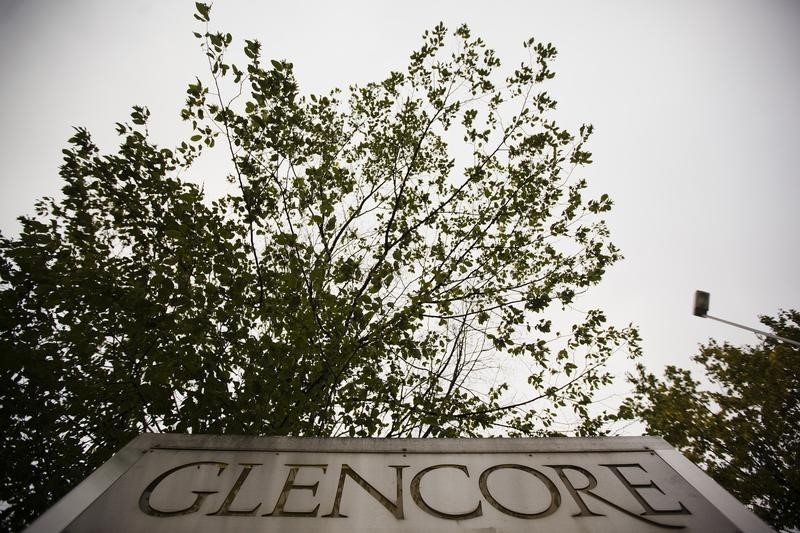* Katanga suspends cobalt sales until late 2019
* Market impact limited for now but tightness to emerge
* Fragility of cobalt supply chain exposed again
By Andy Home
LONDON, Nov 9 (Reuters) - Glencore 's GLEN.L Katanga mine in the Democratic Republic of Congo (DRC) was supposed to transform the cobalt market.
After two years of being offline, Katanga's ramp-up was going to add 11,000 tonnes to global supply this year. The surge, equivalent to 10 percent of world production last year, would flip the global market from supply shortfall to surplus.
That was the idea anyway.
Katanga's cobalt, however, has turned out to be radioactive.
Glencore's operating subsidiary, Katanga Mining KAT.TO , has found uranium with "low levels of radioactivity" in its cobalt hydroxide product. enough to pose a health and safety scare, but enough to prevent the material being handled by ports.
Katanga will keep producing but it has suspended cobalt sales until it has built an ion-exchange plant to remove the uranium.
The cobalt supply wave has been postponed until the second half of next year.
That may be good news for investors who have watched prices slump from more than $90,000 a tonne in the second quarter to $55,000 today.
But it's hardly reassuring for buyers, underlining the fragility of a supply chain that still overwhelmingly depends on the mines of the DRC.
PRODUCTION TODAY, SUPPLY TOMORROW
Katanga's Kamoto mine produced 6,450 tonnes of cobalt in hydroxide in the first nine months of this year, seemingly on track to hit Glencore's 2018 guidance of 11,000 tonnes before a further build to 34,000 tonnes next year.
Production will continue, with material being stored on site before being treated in the new ion-exchange plant, which will be constructed at a cost of $25 million by the end of the second quarter next year.
As of Katanga's announcement on Nov. 6, there were already 1,472 tonnes of cobalt product grounded by the sales suspension.
The company expects to be able to process all accumulated stocks over the second half of next year.
That is assuming everything goes according to plan.
Analysts at Wood Mackenzie note that the ion-exchange treatment "should not be particularly challenging on a technical level". But Research Director Gavin Montgomery and Research Analyst Milan Thakore go on to warn that the various logistics problems in the DRC could increase the risk of delays.
Katanga is by no means the only company ramping up cobalt production in the DRC to feed fast-growing demand from the electric vehicle battery sector, but it is by far the biggest.
By the end of next year it will represent 21 percent of Wood Mackenzie's base-case global mine supply forecast.
SLOW-FUSE IMPACT
The immediate impact of Katanga's sales suspension on the cobalt market is likely to be subdued.
A surge of cobalt intermediate products, such as hydroxide from the DRC, is causing indigestion in China, where it is processed into battery-grade cobalt salts.
Cobalt sulphate prices have been under pressure, according to Fastmarkets MB, "with discounts against metal prices widening as a result of weak demand and the continued impact of increasing salts production" ("Battery Raw Material Market Tracker", Nov. 6, 2018).
Cobalt metal prices, meanwhile, have been knocked by a sell-off on the Wuxi Stainless Steel Exchange, Fastmarkets MB says, with some producers even considering cutting production rates to protect margins.
International prices have held up better, but $55,000 quoted on the London Metal Exchange CCBD3 is a far cry from its March high of $95,250.
A soggy physical market was neatly summed up by Canadian nickel-cobalt producer Sherritt S.TO in its third-quarter report. "Low physical demand and current cobalt oversupply is likely to keep market conditions subdued through the end of 2018," it said.
The cobalt market, in other words, can live without Katanga's production for now, with the announcement potentially serving to stabilise sliding prices.
The cumulative impact, however, will build over time and disrupt pricing along the cobalt products chain.
"The importance of Katanga to the cobalt story cannot be overstated," WoodMac says.
"Just as the company's guidance issued late last year quickly cast a cloud of oversupply over the medium term, so has this latest news suddenly created the threat of near-term tightness."
And, of course, the concomitant threat of a delayed supply surge in the second half of next year once Katanga resumes sales.
A VOLATILE DEPENDENCE
The Katanga announcement has merely instilled a new dose of volatility into a market that is still recovering from its last supercharged rally.
It's another reminder that when it comes to cobalt, most supply roads still lead to only one country.
The DRC accounted for more than 60 percent of the world's mined cobalt last year, according to S&P Global (NYSE:SPGI) Market Intelligence. Maybe more, depending on how much artisanal cobalt seeped out from the country.
It is also accounting for most of the new supply being brought on stream to feed accelerating demand for cobalt in lithium-ion batteries.
At the end of the supply chain, automotive companies have already been fretting about the DRC's problematic mix of political instability, regulatory unpredictability and artisanal mining.
Tesla's TSLA.O Elon Musk would like to engineer cobalt out of his next generation of batteries altogether, or at least get it "to almost nothing". may yet prove a tall technical order, but it is symptomatic of the pressures to minimise cobalt usage in the electric vehicle revolution.
Katanga's radioactive cobalt will do nothing to assuage the sector's concerns about its volatile reliance on the DRC.
(Editing by David Goodman)
